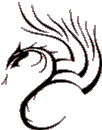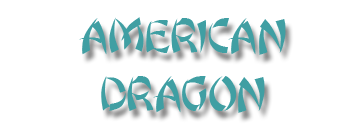Points |
- LI-4, LI-10, LI-11, LI-12, LI-13, LU-5, Zhoujian
- LI-11 through to HT-3, SJ-10
- For pain of the epitrochlea (internal tennis elbow): HT-3, SI-3,
SI-6, SI-8
- For arm Yang Ming sinew Channel: LI-1, LI-5
- For Windows-Cold-Damp: GB-13, LI-11
- For weakness in flexion: SJ-13, SJ-14, Yingshang
- For Yang Deficiency: SJ-13
- For Yin Deficiency or Excess: HT-6
- For Yang Excess:SJ-7
- For spasms: LI-11, LU-5
- For tennis elbow: moxa LI-10, LI-11
- Collaterals:
1. Arm Tai Yang: The elbow cannot be flexed nor extended: SI-7
2. Arm Shao Yang: Contracture of the elbow joint: SJ-5
For flaccidity of the elbow joint: PC-6, SJ-4
- Yang Qi obstruction between the arm and forearm: Pain radiates toward the forearm: LI-9, SJ-13
- Yang Qi obstructed between the upper limb and the trunk: LI-7, LI-8, LI-15, SJ-7
- Tennis elbow with no precise triggering factor with disruption of motor expression: LI-12
- Inflammation of the epitrochlea: SI-14, SJ-15, ST-3
- Trigger Points:
1. Epicondyle:
a. Supraspinatus Muscle:
Referred Pain: Epicondyle pain and pain in the deltoid muscle extending to the arm and supraclavicular fossa: Area around
SI-12 and SI-13
b. Infraspinatus Muscle:
Referred Pain: The pain affects mostly the neck, the deltoid muscle, the lateral aspect of the upper limb and may involve the epicondyle: Area around SI-11
c. Coracobrachialis Muscle:
Referred Pain: The pain affects the stump of the shoulder, and the posterior aspect of the upper limb and may also involve the epicondyle: Area around LU-2
d. Scalene Muscle (Anterior, Middle, Posterior):
Referred Pain: The pain affects the medial border of the scapula, the shoulder, the lateral aspect of the upper limb and may involve the epicondyle: Area around LI-17
e. Triceps Brachii Muscle, Long Head:
Referred Pain: Epicondyle pain, pain in the posterior aspect of the shoulder, and possibly at the base of the neck: Area around SJ-13
e. Triceps Brachii Muscle, Medial Head:
Referred Pain: Pain on the radial aspect of the forearm: SJ-11
f. Triceps Brachii Muscle, Lateral Head:
Referred Pain: Epicondyle pain: Area around Yingxia
g. Extensor Carpi Radialis Longus Muscle:
Referred Pain: Epicondyle pain and pain radiating toward LI-5: Area around LI-11
h. Brachioradialis Muscle:
Referred Pain: Epicondyle pain and pain in the dorsal aspect of the first metacarpal space: Area around LI-10
i. Extensor Digiti Muscle:
Referred Pain: Epicondyle pain and pain in the dorsal aspect of the fourth finger: Area around LI-9
j. Supinator Muscle:
Referred Pain: Epicondyle pain and pain in the dorsal aspect of the first interosseous carpal space: Area around Zexia
k. Subclavius Muscle:
Referred Pain: Subclavicular pain and pain in the anterior aspect of the arm, epicondyle, anterior border of the forearm and in the first three fingers: Area around KI-27
2. Epitrochlea:
a. Pectoralis Major Muscle:
Referred Pain: Pectoral pain in the sternal head, the anteriomedial border of the upper limb, epitrochlea and in the palmar aspect of the last three fingers: Area around ST-15
b. Pectoralis Minor Muscle:
Referred Pain: Pectoral pain in the anterior aspect of the shoulder, the anteriomedial border of the upper limb, epitrochlea and the palmar aspect of the last three fingers: Area around LU-1
c. Serratus Posterior Superior Muscle:
Referred Pain: Pain in the suprascapular fossa, the posterior aspect of the shoulder and arm, the epitrochlea, the posterior aspect and medial border of the forearm and the fifth finger: Just below the scapular spine, inferior to SI-12
d. Serratus Anterior Muscle:
Referred Pain: Pain in the medial border of the inferior angle of the scapula, the subaxillary flank, the medial border of the upper limb, the epitrochlea and the palmar aspect of the fourth and fifth fingers: Area around SP-21
e. Latissimus Dorsi Muscle:
Referred Pain: Pain below the tip of the scapula, the medial border of the upper limb, and the epitrochlea: Area around GB-22
f. Triceps Brachii Muscle, Medial Head:
Referred Pain: Pain in the epitrochlea, the anteromedial border of the forearm and the palmar aspect of the fourth and fifth fingers: Area around HT-2
3. Olecranon:
a. Triceps Brachii Muscle:
Referred Pain: Pain in the olecranon: Area around SJ-10
|

